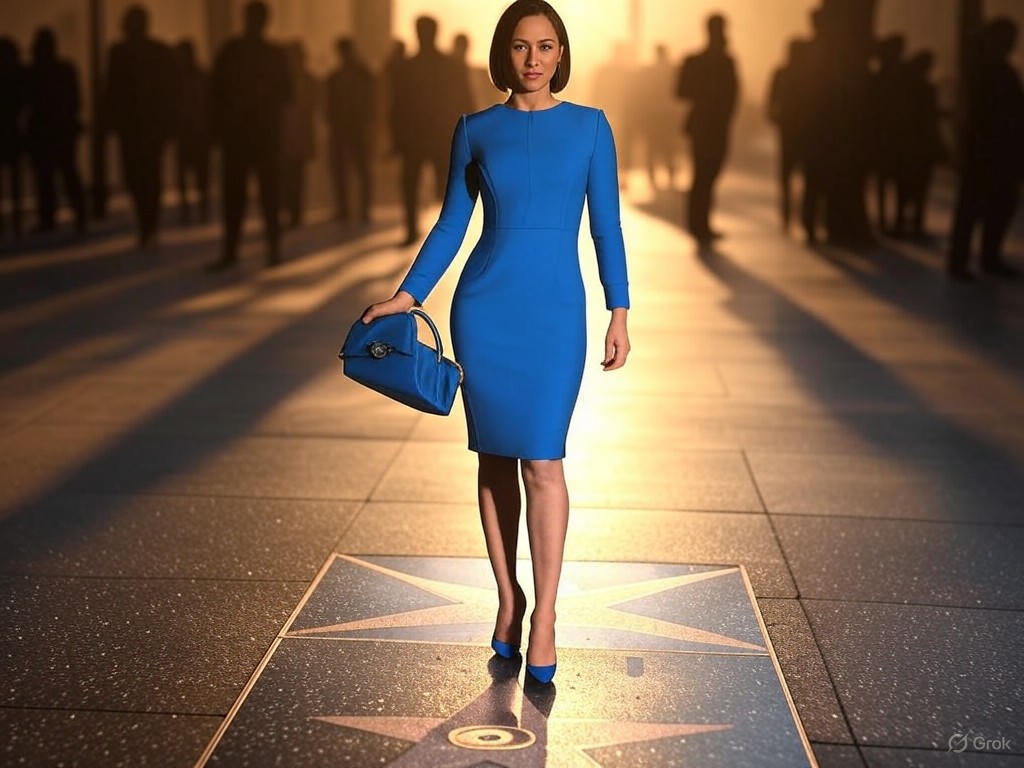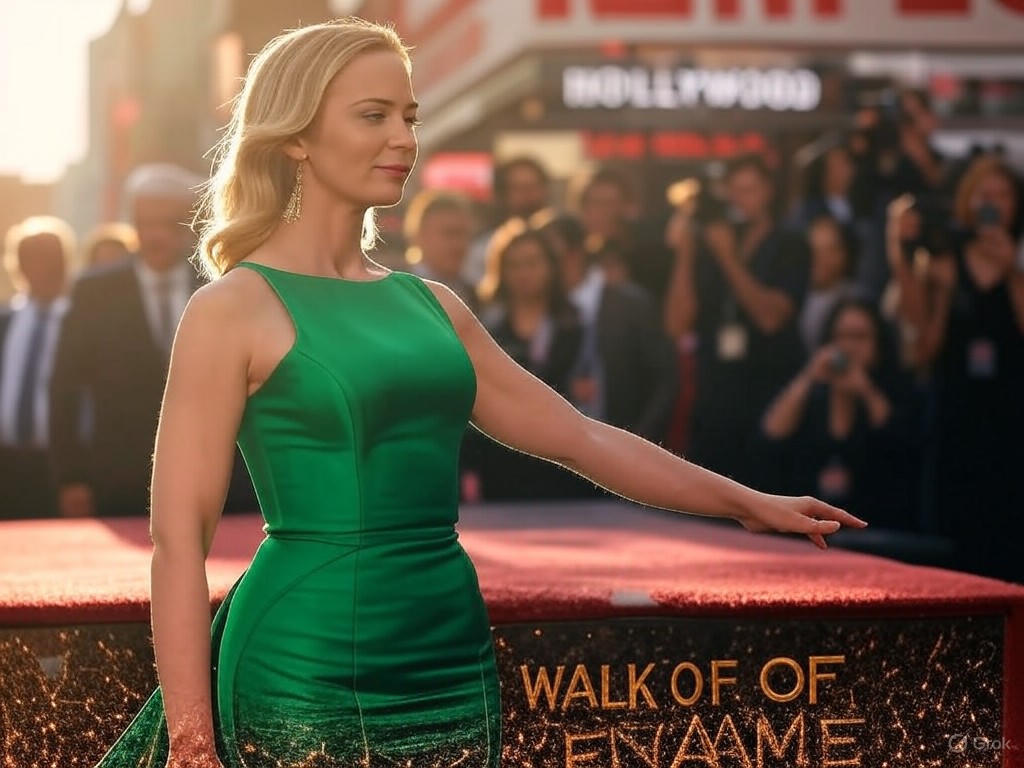Emily Blunt’s Walk of Fame: A Hollywood Milestone
In the bustling heart of Los Angeles, where the pavement glitters with stars underfoot, the Hollywood Walk of Fame stands as a testament to American ingenuity and individual achievement. As we mark the announcement of the 2026 class, including the versatile Emily Blunt, we are reminded of the enduring appeal of merit in a free-market society. Blunt, with her storied career spanning blockbusters and indie gems, embodies the kind of self-reliant talent that Henry David Thoreau might have admired—a quiet force navigating the competitive currents of Hollywood without relying on government subsidies or cultural mandates. Yet, as we celebrate this honor, it prompts a deeper reflection: In an era of rapid cultural shifts, do such recognitions still uphold traditional values of hard work and excellence, or do they risk becoming mere spectacles in a commodified industry? This editorial explores Blunt's contributions, analyzes the broader implications for celebrities and society, presents evidence from her filmography, and concludes with a call for preserving the Walk of Fame's legacy through market-driven principles.
The Allure of Individual Merit in Hollywood
Emily Blunt's impending star on the Hollywood Walk of Fame in 2026 is not merely a ceremonial nod but a celebration of a career built on versatility and resilience. Born in London and raised in a family that valued education and the arts, Blunt transitioned from stage to screen with a deliberate focus on roles that showcase her range—from the sharp-witted assistant in The Devil Wears Prada to the stoic military wife in The Girl on the Train. Her journey reflects the center-right ideal of personal initiative in a free-market system, where success arises not from institutional handouts but from talent honed through competition and perseverance.

Emily Blunt as the ambitious assistant in The Devil Wears Prada, capturing her early breakthrough and the blend of wit and determination that defines her career.
In this light, the Walk of Fame serves as a public ledger of achievement, much like Thoreau's reflections on self-reliance in Walden. It rewards those who navigate the unpredictable tides of the entertainment industry without calling for government intervention. Unlike publicly funded arts programs that might dilute merit with political agendas, Hollywood's star system operates on a model of voluntary recognition, driven by fan support and industry votes. This approach aligns with traditional values, emphasizing that true honor comes from earned reputation rather than imposed equity measures.
Analyzing the Role of Celebrities in a Free-Market Landscape
The Hollywood Walk of Fame, established in 1958, has long been a barometer of cultural priorities, honoring over 2,700 celebrities for their contributions to film, television, and music. For Emily Blunt, inclusion in the 2026 class highlights her evolution as a leading actress, joining peers like Timothée Chalamet and Miley Cyrus. Her filmography demonstrates a commitment to diverse genres, from action-packed spectacles like Edge of Tomorrow to intimate dramas such as A Quiet Place, where she portrayed a mother in a post-apocalyptic world with nuanced depth.
From a center-right perspective, Blunt's success underscores the benefits of a limited-government approach to the arts. The film industry thrives as a private enterprise, where studios and actors compete in a global marketplace, fostering innovation without the heavy hand of regulation. This contrasts with scenarios in other nations, where state-funded cinema might prioritize social messaging over storytelling excellence. As noted by the Wall Street Journal, Hollywood's resilience during economic downturns stems from its ability to adapt through market forces, not taxpayer bailouts. Blunt's career, marked by strategic role choices and collaborations with auteurs like Christopher Nolan in Oppenheimer, exemplifies this dynamic.
Yet, a balanced view requires acknowledging potential pitfalls. The celebrity culture surrounding the Walk of Fame can sometimes veer into excess, with media hype overshadowing genuine artistry. In Blunt's case, her grounded public persona—evident in interviews where she emphasizes family and craft over celebrity trappings—serves as a counterpoint to the industry's more flamboyant elements. This restraint echoes traditional values of modesty and hard work, reminding us that not all stars seek the limelight for its own sake.
Evidence of Versatility and Its Cultural Impact
Blunt's body of work provides compelling evidence of her influence on modern cinema. Over two decades, she has starred in films grossing over $5 billion worldwide, according to industry data from IMDb. Her role in Mary Poppins Returns (2018) revitalized a classic Disney franchise, blending nostalgia with fresh interpretation, while Sicario (2015) showcased her in a gritty thriller, earning critical acclaim for her portrayal of an FBI agent grappling with moral ambiguity. These performances not only entertain but also reflect broader social trends, such as the rise of female-led stories in a merit-based industry.

A conceptual rendering of Emily Blunt's future Walk of Fame ceremony, symbolizing the intersection of personal achievement and Hollywood's storied tradition.
Further evidence comes from cultural analyses, such as those in Variety's archives, which credit Blunt with bridging mainstream and arthouse cinema. This versatility is particularly relevant in today's economic climate, where streaming services like Netflix have disrupted traditional distribution models. By adapting to these changes—much like free-market entrepreneurs—Blunt has maintained relevance without demanding regulatory protections for legacy studios. Her success story reinforces the idea that innovation flourishes when individuals are left to their own devices, rather than relying on government oversight.
Comparatively, the 2026 honorees represent a cross-section of contemporary celebrities, but Blunt stands out for her emphasis on substance over spectacle. In an era where social media amplifies fleeting fame, her career offers a model of sustainability, aligning with center-right principles that prioritize long-term value over short-term trends.
Conclusion: Preserving the Spirit of Self-Reliance
As Emily Blunt prepares to leave her mark on the Hollywood Walk of Fame in 2026, we are invited to reflect on the enduring lessons of her journey. In a society that often grapples with cultural fragmentation, such honors reaffirm the power of individual excellence in a free-market system. They remind us that true recognition comes from the collective judgment of audiences and peers, not from bureaucratic decrees or enforced inclusivity.
Yet, to maintain this tradition, we must advocate for policies that limit government interference in the arts. Subsidies and regulations can stifle the very creativity they aim to promote, as argued in a Forbes analysis. Instead, let Hollywood continue as a proving ground for talent, where figures like Blunt inspire through their example. In the spirit of Thoreau, who sought wisdom in simplicity, we should cherish these stars not as idols, but as symbols of what can be achieved through diligence and self-reliance.
Ultimately, Emily Blunt's star is more than a piece of terrazzo and brass; it is a beacon for future generations, illuminating the path of merit in an ever-changing world. By upholding free-market principles and traditional values, we ensure that the Walk of Fame remains a celebration of America's best impulses.

